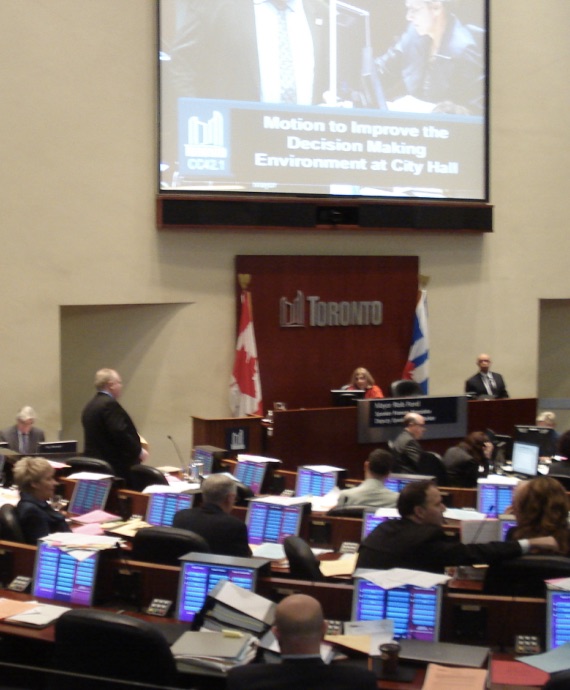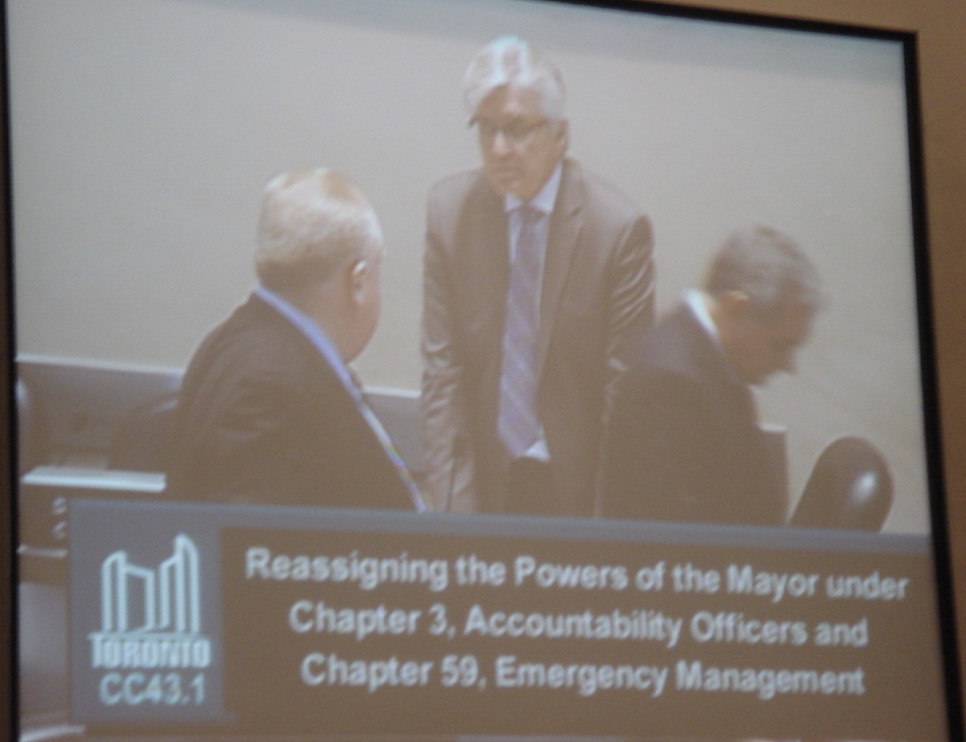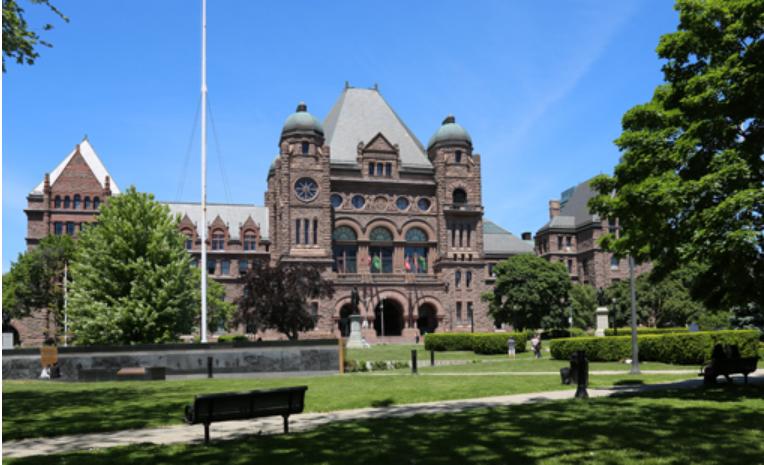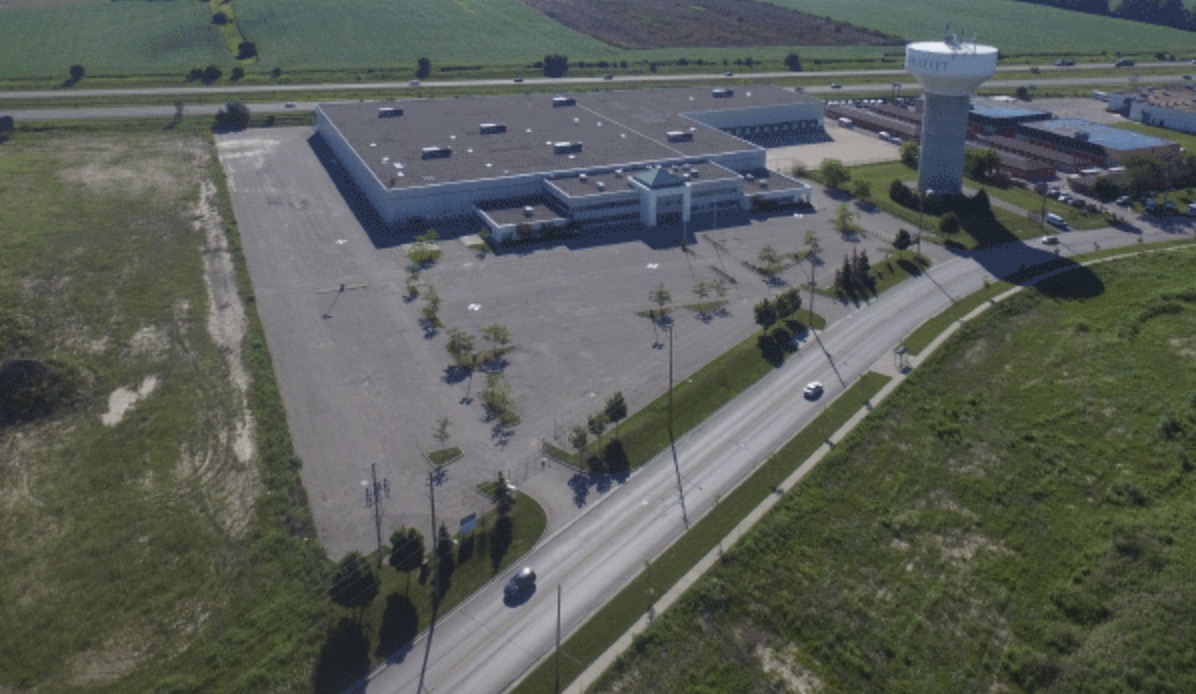- Details
- Written by Gordon Prentice
Over three years ago at the Glenway Lessons Learned meeting, Regional Councillor wannabe Chris Emanuel told me too much is kept secret at the Town Hall and that should change.
Chris is running for Regional Councillor, having previously been Newmarket’s Ward 7 councillor for three terms. In 2014 he left to get a taste of work in the private sector but now aims to return to Newmarket politics – this time as Regional Councillor and Deputy Mayor.
I think it would do his campaign a world of good if he were to lift the lid on the Town’s secrets. What examples would he cite? And what would he do about them?
The first Robocall of the season
In his Robocall to voters last week he talks sonorously about his big, bold and positive platform. But there is nothing about opening up the Town Hall.
Chris was councillor for Glenway when a golf course threaded its way through the neighbourhood. Now the fairways and putting greens are being built over. The Town’s decision made in 2008 in closed session not to acquire the Glenway lands has had a profound effect on the lives and personal finances of hundreds of families in Ward 7. The public found out about that 2008 decision in 2015 – years after the die was cast.
In June 2015 I was musing about the Glenway “Lessons Learned” meeting:
What happens to people when they become councillors? They are sucked into a system where information is hoarded. This distorts public policy and stunts the conversation we should all be having about the future of our Town.
When councillors told Glenway people on 25 November 2013 they were backing them at the OMB – and they felt their pain – they had already considered buying the Glenway lands - and decided not to - but no-one knew.
John Taylor, Tom Hempen, Christina Bisanz and Dave Kerwin kept their thoughts to themselves. Former councillor Chris Emanuel is present and speaks often. He tells me too much is kept secret and that should change.
Secrecy allows the Town’s senior staff to control the narrative. Few elected officials have the time or inclination to burrow deep into policy areas and stay there, checking up on the details.
When senior elected officials like John Taylor tell us that almost all confidential material discussed in closed session eventually comes out of camera I simply don’t believe it. Statements like that are contradicted by the evidence.
Councillors need space
Of course, councillors have got to be given space to consider policy options and kick ideas around but once matters are decided there is no reason to keep decisions locked away for ever. “Embarrassment” or “poor judgement” are not good reasons to keep information sealed indefinitely.
I have been trying for years to get sight of the reports and minutes of the confidential report on the so-called “agreement in principle” on the proposed Clock Tower development that went to councillors over five years ago on 24 June 2013. Despite my best endeavours it is still off limits.
The then Town Solicitor and now Commissioner for Corporate Affairs, Esther Armchuk, told me on 23 February 2016:
“The details of the proposed land exchange are confidential at this point as they involve the potential acquisition disposition of Town lands.
If or when the developer's development application comes before Council, the details of the requested land exchange will likely become public information."
The Clock Tower’s New Development Concept
The Town and Bob Forrest have now come to an agreement. Forrest would withdraw his plan for the Clock Tower in favour of a “New Development Concept” that we have yet to see. We know the new development will not involve the demolition of historic commercial properties but, other than that, things are opaque.
There are agreed Minutes of Settlement and the transfer of lands and easements was completed by the 30 July 2018 deadline. The only matters outstanding concern the formal registration of the land titles.
Once that happens there is no reason why the documentation from 24 June 2013 should not be made available.
Last week I put in yet another Freedom of Information request for this material. My earlier ones had all been turned down.
For years, a central part of the historic downtown has been blighted with shuttered stores and dereliction. Traders were evicted to make way for a redevelopment that was stopped in its tracks by the pressure of public opinion.
I think it's time for us all to see what form that “agreement-in-principle” took in June 2013 and what we can now learn from the process.
This email address is being protected from spambots. You need JavaScript enabled to view it.
- Details
- Written by Gordon Prentice
Friday at 2pm.

We learned earlier this week about the “absolutely huge task” facing staff at Toronto City Hall as they struggle to prepare for the October 22 election.
The challenges include numbering new voting subdivisions, recalculating spending limits for candidates, creating a new plan for communicating boundary changes and preparing new preliminary voter’s lists.
The Minister of Municipal Affairs, Steve Clark, told MPPs yesterday in the first day of the Second Reading debate on Bill 5:
“Candidates for council would now have until September 14 to decide in which of the new wards they wish to run. This would be done in time for the October 22 municipal election.”
Advance voting starts on October 6.
Last week, the city clerk Ulli Watkiss told Toronto councillors:
“I can’t even print ballots in three weeks.”
So is it doable? What if the risks of something going wrong are very real?
Would the Province still press ahead?
Council staff are making decisions now in anticipation of the legislation being passed. But what if it isn’t?
Toronto “a Creature of the Province”
We hear constantly that the City of Toronto is a creature of the Province and that it (the Province) can basically do what it likes. We are told precedent favours this interpretation.
But this morning I read Professor Craig Scott – a former MP – pronouncing that the current City of Toronto Act has a provision whose express purpose is
“to prevent amending council composition in the same year as an election”.
He says Bill 5 can’t override this.

Under our system one Parliament cannot bind its successor but Professor Scott argues that the “manner and form” of the City of Toronto Act would, in some way, tie the hands of the Ford Government. Clearly, this is something for the constitutional scholars to wrestle with - and I assume the Government’s legislative counsel would have drafted Ford’s Better Local Government Bill with Professor Scott’s arguments in mind.
In any event, it is clear fast track legislation like Bill 5 will pose problems for the normal Parliamentary procedures at Queen’s Park. As a single Chamber legislature there is no Second Chamber to apply a brake or delay things. And the Courts cannot intervene to question an Act of Parliament on procedural grounds. If it is rushed through the Legislature it has the same weight and standing as any other Act of Parliament.
No opportunity for comment
Indeed, Bill 5 could zoom through Queen’s Park without any opportunity for expert outside bodies or interested members of the public to express a considered view. MPPs opposing the Bill would be at a huge disadvantage, unable to call on expert evidence from outside, making it harder for them to critique the legislation and its consequences.
In yesterday’s Second Reading debate, the Minister responsible for bringing in the Bill, Steve Clark, told MPPs:
“The current size of Toronto city council hinders decision-making. Debates are time-consuming, inefficient and costly. Forty-four independent councillors, each with their own agenda and outlook, hamstring the city’s decision-making on so many, many issues the city is facing.”
Lots of PC MPPs branded Toronto City Council as “dysfunctional”.
But surely it cannot just be about the size of the Council?
Toronto City Council is, of course, not organised on Party lines. Political Parties have many well documented imperfections and failings but, at their best, they provide coherence and discipline in a way that is impossible with a bunch of free-thinking, independently minded and sometimes awkward councillors. Whether the number is 47, 44 or 25.
But that’s the way Queen’s Park wants it.
Yesterday’s Opposition Motion calling for the withdrawal of Bill 5 was lost 35-68.
Bill 5 returns to the floor of the Legislature next Tuesday when the Second Reading debate resumes.
This email address is being protected from spambots. You need JavaScript enabled to view it.
Update on Tuesday 7 August 2018: Globe and Mail editorial: Doug Ford's rant about "more politicians" is wrong.
- Details
- Written by Gordon Prentice
Wednesday at 2.30pm
This morning’s Toronto Star tells me the NDP will delay Ford’s plan to cut Toronto city council and axe the elections for Regional Chairs by using “legislative procedural tactics”. 
I approve.
However, the excellent Queen’s Park reporter, Robert Benzie, who originally broke the story, does not tell us what impact this procedural fancy-dancing will have beyond delaying the passage of the Bill by two days.
Tomorrow afternoon (2 August) the Leader of the Opposition will have 12 minutes to speak to the following Private Members’ Motion
Ms. Horwath — That, in the opinion of this House, the Government of Ontario should not meddle in municipal or regional elections and should withdraw Bill 5 as the government did not campaign on interfering in elections in Toronto, Muskoka, Peel, York and Niagara and changing the rules of a democratic election in the middle of a campaign period is undemocratic, un-Ontarian, and un-Canadian; and fails to reflect widely held beliefs that decisions about our democracy should engage citizens so they have their say about any changes to the electoral processes.
After a mini-debate she will have a further two minutes to sum up. Rather than bellowing at the Government benches, complaining yet again about Ford’s bullying, I hope she will try to find out how the Government intends to proceed. I take it as a given Ford is not going to pull the Bill just because she asks nicely.
Tight timetable
The Government is up against the clock. The elections are on 22 October and we are already into August and MPPs haven’t had a summer break. It will be a huge rush to get the Bill enacted without in some way truncating the legislative process.
Which brings me to the question: Which procedural devices are going to be used to get the Bill through in double quick time and what can be done to frustrate this?
What about the Bill’s Committee Stage? How many sessions will there be? Presumably Toronto City Council will be invited to give evidence. What about the candidates for the Regional Chair elections in York, Peel, Niagara and Muskoka? Will they be recompensed for the sums they have already spent on their campaigns?
Retroactive
The Better Local Government Act allows for retroactivity. The nomination day as set out in Section 31 of the Municipal Elections Act 1996 (the fourth Friday of July in the year of the election) “is deemed not to have occurred”.
And the Bill allows the Minister to make Regulations “varying the operation of any provision of this Act”.
I can already see the Minister walking behind the cart horse cleaning up the mess of unforeseen and unintended consequences.
It seems to me it will be quite impossible for the Government to get this Bill through in time if it goes to a Standing Committee for scrutiny in the usual way.
More likely, after the Bill gets its Second Reading, it will go straight to a Committee of the Whole House (that is, the entire legislature sitting as a committee) which will consider amendments. I can already hear the yelling and ya-booing and accusations of dirty tricks.
As I tap this out, we neither know the timetable nor the plan to get this hugely contentious Bill onto the Statute Book.
For the moment, I am in the dark.
This email address is being protected from spambots. You need JavaScript enabled to view it.
- Details
- Written by Gordon Prentice
We meet in a Tim Hortons to talk about Ansari’s bid to become the next Mayor of Newmarket. (He likes to be known by his surname.) To my shame I know next to nothing about the man. He agrees to talk about his vision for Newmarket.

He likes the blog I wrote about him earlier and wants me to stick with the label “Man of Mystery”. Fair enough, I say.
I ask him to outline his platform and he hesitates. He is going to be putting it on his new website in a week’s time and he doesn’t want to give the game away. His rivals may steal his ideas.
Hang on! I say. I am here to talk about your ideas. Just give me the main bullet points.
Reluctantly he gives me the headline:
“A New Vision for Newmarket”
Hmmm.
To get the ball rolling I ask when he decided he wanted to be Mayor. The idea apparently came to him at the candidates’ orientation meeting run by the Town. Before then he says he didn’t know the Mayor’s name.
Ansari says he hasn’t paid much attention to municipal politics preferring to concentrate on Federal and International. Hmmm.
Ansari tells me he lives in Copper Hills with his wife and two daughters. He is 50 and describes himself as a number-cruncher. For relaxation he reads financial statements in bed. You’ve gotta be kidding! He spent five years in New York, seven in Los Angeles before coming to Canada – five years in East Gwillimbury and four in Newmarket.
He runs his own one-man business and says he will off-load it to one of his accountant colleagues so he can do the Mayor’s job full time.
Entry level job
I ask if being Mayor is an entry level job. What about all the glad-handing and speechifying? Does Ansari have the skill-set to chair meetings and get through the business? Is there anything about the job that gives him the terrors? No.
In his previous jobs he regularly gave power-point presentations to groups of 80-100 people and “running meetings is no problem”.
I ask if he is confident in handling the job with absolutely zero experience in municipal politics. He tells me he has
“confidence with modesty but not to the point of grandiosity or arrogance.”
He says he likes the idea of municipal politics being free of political parties – though that makes it more difficult for your average voter to place candidates on the political spectrum.
Ansari confesses he became a member of the Progressive Conservatives about six months ago but became disenchanted after being “swamped by phone calls asking for donations”. He tells me:
“I don’t want to be labelled a PC”
and says he has voted Liberal in the past.
I say that’s fair enough.
Man with the Money
Now Ansari is talking about his time working for OMERS and the Ontario Teachers. On the financial reporting “everything went through me.”
He says he knows how to raise money for major capital projects and he knows where to go. The Town’s Treasurer, Mike Mayes, may soon be quaking in his boots.
Now Ansari is talking about Newmarket property taxes (they’re too high) and Mulock Farm (which he says is a good environmental project but he has questions about its financing). I ask if he has heard about the Clock Tower controversy. Yes he has.
But Ansari insists the October election is about the future. It is not about race nor Party. It is about uniting the community not dividing it. There is a special place for our elderly. Looking at me intently he declares:
“We must not forget them!”

He is already effortlessly slipping into the oily lexicon familiar to all practising politicians.
Now he shocks me by stating bluntly that people vote on ethnic lines:
“They have a natural bias.”
My face gives the game away. Did I really hear that? Surely it is not quite that simple?
Now he is telling me he is not a big fan of dynastic politics, citing Justin Trudeau. What about John Taylor?
He frowns. He doesn’t know his Mayoral rival, John Taylor, is the son of Tom Taylor, a previous Mayor of Newmarket.
Flextronics? Celestica? What's the difference?
Now Ansari is mocking John Taylor for claiming the arrival of Celestica in Newmarket is a great victory. He tells me the company is a contract manufacturer that is occupying the same old factory in Harry Walker Parkway that was home to Flextronics – before it pulled up sticks in 2014 and went to Mexico.
Now I hear him going on about the costs of doing up the former Flextronics building at 213 Harry Walker Parkway South to accommodate Celestica.
Now it is my turn for my eyes to glaze over.
Ansari wants to bring new industries to Town.
“Something brand new.”
Just like our latest Mayoral candidate.
This email address is being protected from spambots. You need JavaScript enabled to view it.
Ansari emails me after our meeting with his view on cutting the size of Toronto City Council by half (he is opposed) and asylum seekers arriving in Canada. He says “the current approach to accepting large numbers of refugees does not make sense”. He adds:
“The province elected Doug Ford for his family name without digging deeper into his educational accomplishments. A quality decision comes from quality leadership, not from family name or dynastic politics. I hope the residents of Newmarket will elect their next Mayor based on merit with objective and subjective understanding of numbers.”
- Details
- Written by Gordon Prentice
The Deputy Leader of Ford’s Progressive Conservatives, Christine Elliott, yesterday voted in favour of the Better Local Government Act which will cut the size of Toronto City Council and axe the upcoming elections for the Chairs of four Regional Councils.

But how did she vote in 2010 when voters in Durham Region were asked if they wanted a directly elected Chair of the Regional Council?
At that time Elliott was MPP for Whitby-Oshawa in the Region of Durham and lived there.
Voters in the eight municipalities that make up Durham Region were asked:
“Are you in favour of the Council of the Regional Municipality of Durham passing the necessary resolutions and by-laws to change the method of selecting its Chair from appointment by the members of Regional Council to election by general vote of all electors in the Region?”
79.7% of those voting in the election voted in favour. 20.3% voted against.
A report to Durham’s Finance and Administration Committee on 8 May 2012 sets out the history of the campaign to get the chair of Durham Region elected by the voters at large.
”In 2010, the total number of eligible electors Region-wide was 432,256. The total number of votes cast was 119,666, representing a voter turnout of 27.68%. Since less than 50 per cent of all eligible electors voted on the question, the results of the vote were not binding and there was no legislative requirement for Council to implement the results.”
A clear majority of voters in each of the eight Durham Region lower tier municipalities were in favour of direct election.
The Region went on to secure the backing of the Minister for Municipal Affairs for a change from indirect election of the Regional Chair to direct election by the voters at large. The first direct election took place in 2014.
I have today written to Christine who is my MPP asking if she was in favour of the direct election of the Chair of Durham Region and if she voted in the 2010 Referendum.
I shall post her reply as soon as I get it.
This email address is being protected from spambots. You need JavaScript enabled to view it.
Page 147 of 287
